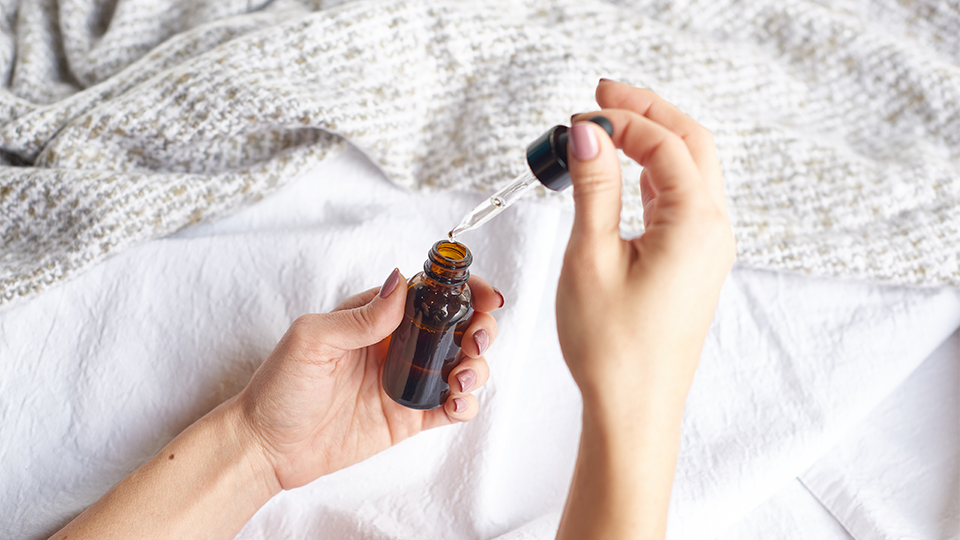You might have noticed cannabidiol (CBD) products popping up everywhere, from your social media feed to the neighborhood convenience store. If you are thinking about trying CBD, here’s what you should know.
Phytocannabinoids are a diverse group of compounds produced by the cannabis plant. CBD and tetrahydrocannabinol (THC) are two examples. Both hemp and marijuana are varieties of cannabis, but the two plants couldn’t be more different.
The genetic variances between these two plants leads to substantial distinctions in the profile of the cannabinoids they produce (1). Marijuana plants have been selectively bred over generations to create plants with very high levels of THC, the psychoactive compound that accounts for marijuana’s “high.”
Hemp plants produce elevated levels of CBD but contain less than 0.3% THC. This very-low trace amount is well below the level that is associated with a psychoactive effect.
Cannabinoids and the Endocannabinoid System
Phytocannabinoids are compounds that are unique to the cannabis plant. However, the body naturally produces its own cannabinoid compounds, known as endocannabinoids (2). These cannabinoids interact with specific receptors within the body’s own endocannabinoid system. First discovered in the 1990s, the endocannabinoid system is a diverse signaling system within the body that contributes to maintaining overall balance (3).
Isolate, Broad Spectrum, and Full Spectrum
Three main types of CBD are available: isolate, broad spectrum, and full spectrum. Isolate is the purest form of CBD and is the most processed of the three. It’s produced by removing all other compounds from the hemp plant, leaving only pure CBD. Broad spectrum CBD contains most of the compounds of the hemp plant but has been processed to remove all traces of THC.
Full spectrum CBD contains all the compounds of the hemp plant in their naturally occurring proportions. This includes terpenes, carbohydrates, fatty acids, and cannabinoids. These compounds may also interact with each other, creating a more complete effect and experience (4).
CBD Quality
With so many new CBD products rushing to market, finding a quality product can be challenging. Without proper testing, you can’t be sure that hemp extracts are tested for quality, purity, and consistency or that they contain less than 0.3% THC. In addition to concerns about purity, not all CBD products undergo quality testing to ensure that they deliver the amount of CBD that’s promised on the label.
Rigorous quality and safety testing are essential, but it’s also helpful to know where the hemp was grown so you can be confident that you are getting a high-quality product. U.S.-grown hemp is among the best choices for quality and purity.
References:
1. Andre C, Hausman J, Guerriero G. Cannabis sativa: The Plant of the Thousand and One Molecules. Front Plant Sci. 2016 Feb 4; 7: 19.
2. Alger BE. Getting High on the Endocannabinoid System. Cerebrum Dana Forum Brain Sci. 2013;2013.
3. Maccarrone M, Bab I, Bíró T, et al. Endocannabinoid signaling at the periphery: 50 years after THC. Trends Pharmacol Sci. 2015;36(5):277-296.doi:10.1016/j.tips.2015.02.008.
4. Russo EB. Taming THC: potential cannabis synergy and phytocannabinoid-terpenoid entourage effects. Br J Pharmacol. 2011 Aug;163(7):1344-64. doi: 10.1111/j.1476-5381.2011.01238.x.
The post Thinking About Trying CBD? Here’s What You Should Know appeared first on Isagenix Health.
Source: IsagenixHealth.net


You May Also Like
Post-Workout Super Shake
Winter Trail Mix
Apple Spice Granola
IsaDelight Bark With Caramel Brulée Drizzle
Caramel Brulée Cookie Dough Bites
Homestyle Chicken Noodle Soup
BĒA Super Sparkler
Peppermint Mocha Shake
IsaDelight Cashew Butter Cups
Plant-Based Banana Bread
Nature Oat Bake Granola
Nature Oat Bake Isa-Cream Sandwiches
Nature Oat Bake Skewers
BEA Mango Mimosa Slushie
Plant-Based Strawberry Ice Cream
Plant-Based Strawberry Crepes
Plant-Based Strawberry Muffins
Superpower Elixir
Plant-Based Maple Pecan Protein Balls
Immune-Boosting Oats
Celebration BĒA Sparkler
Bone Broth Chicken Gravy
Kale & Sausage Bone Broth Soup
IsaDelight Reindeer Bark
Holiday Charcuterie Board
Leftover Turkey and Vegetable Soup
Protein Chocolate Mug Cake
Vanilla Protein Coffee Creamer
Greens Lavender Iced Matcha Latte
Isagenix Greens Salad Dressing
Everyday Ginger-Infused Cleanse Tea
Choco-Lava Mug Cake